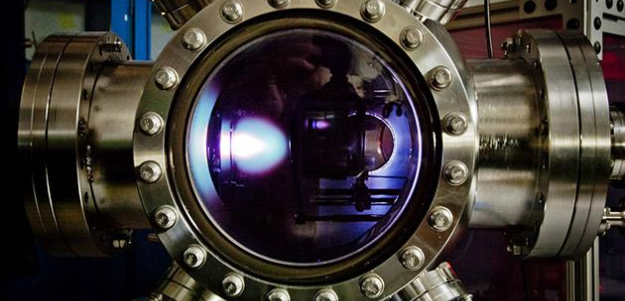
Researchers create capacitor with dramatically increased energy density
By DE Staff
General EnergyBerkeley Lab team’s process introduces defects to ferroelectric material to boost capacitor storage capacity.

To make its new capacitor, Berkeley Lab researchers first used a pulsed-laser deposition process in this chamber to create thin film of lead magnesium niobite-lead titanate, a common relaxor ferroelectric material. (Photo credit: Martin/UC Berkeley)
The ceramic material exhibits an induced piezo-electric effect which makes it a good choice for small scale capacitor applications, like the ignition button on a gas grill. However, the Berkeley Lab team needed to find a way to optimize the material to withstand rapid and repeated charge/discharge cycles to high voltages but without damaging the material.
The researchers turned to an approach that they had previously developed to “turn off” conductivity in a material. By bombarding a thin film of lead magnesium niobite-lead titanate, a typical relaxor ferroelectric, with high-energy helium ions, they were able to introduce isolated defects that trap electrons, decreasing the film’s conductivity. Measurements showed that the ion-bombarded film had more than twice the energy storage density of previously reported values and 50 percent higher efficiencies.
According to the research team, the same approach could also improve other dielectric materials to improve energy storage, and open the possibility for longer-term applications for capacitors such as in vehicles, personal computers and other electronic devices. The Berkeley Labs team work was featured in the July 2020 issue of Science.
www.lbl.gov
